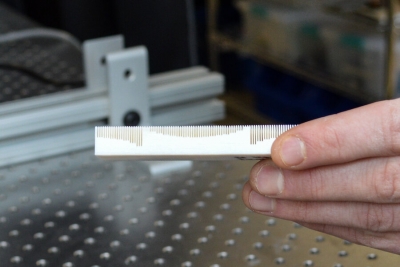
Using artificially engineering materials, researchers achieve contactless manipulation.
Have you heard about ultrasound? As the name suggests, ultrasound corresponds to sound waves with frequencies that are higher than the upper limit of what humans can hear. While we can’t hear it, we still put it to good use, albeit in different ways.
One of the most popular ways, and one that you might have heard of, is to use ultrasound for scans. Ultrasound scans are a procedure whereby high-frequency sound waves are bounced off objects (think organs or bones) to create an image of part of the inside of the body. Commonly used to monitor the health of unborn babies during pregnancy, ultrasound waves are also employed to diagnose medical conditions.
Hands-free movement Researchers from the University of Minnesota Twin Cities have now discovered a new method that uses ultrasound waves to move objects. The study was published in Nature Communications early in December.
Even though waves have been shown to move objects before, these objects were typically very small, in the order of millimetres to nanometres. What the researchers of this study were able to achieve was to move bigger objects using ultrasound, backed by the principles of metamaterial physics.
What are metamaterials?
Materials that are engineered artificially to interact with waves such as light and sound are referred to as metamaterials. The researchers placed a metamaterial pattern on the surface of an object, which could then be steered without touches using sound.
The researchers were not only able to move an object forward using this technique, but were also able to pull it back towards the source. Even though the study only serves as a demonstration of a concept, higher frequencies of waves and different materials and object sizes are expected to be tested in the future.
The need to move things is ever-present in many fields of science and engineering, especially robotics. By exploring ultrasound waves to move objects without physical contact, the researchers have provided a new mechanism of contactless manipulation that might prove to be important in the upcoming years.
Picture Credit : Google

